The figure given below depicts two circular motions. The radius of the circle, the period of revolution, the initial position and the sense of revolution are indicated in the figures. Obtain the simple harmonic motions of the x-projection of the radius vector of the rotating particle P in each case.

(a) At t = 0, OP makes an angle of 45∘=π/4 rad with the (positive direction of ) x-axis. After time t, it covers an angle 2πTt in the anticlockwise sense, and makes an angle of 2πTt+π4 with the x-axis.
The projection of OP on the x-axis at time t is given by,
x(t)=Acos(2πTt+π4)
For T=4s.
x(t)=Acos(2π4t+π4)
which is a SHM of amplitude A, period 4 s,
and an initial phase*=π4.
(b) In this case at t = 0, OP makes an angle of 90∘=π2 with the x-axis. After a time t, it covers an angle of 2πTt in the clockwise sense and makes an angle of (π2−2πTt) with the x-axis. The projection of OP on the x-axis at time t is given by
x(t)=Bcos(π2−2πTt)
=Bsin(2πTt)
For T = 30 s,
x(t)=Bsin(π15t)
Writing this as x (t ) = B cos(π15t−π2), and comparing with Eq. (14.4). We find that this represents a SHM of amplitude B, period 30 s, and an initial phase of −π2.
Topper's Solved these Questions
- BOOK - NCERT TELUGUCHAPTER - OSCILLATIONSEXERCISE - Exercises23videos
OSCILLATIONS
- BOOK - NCERT TELUGUCHAPTER - OSCILLATIONSEXERCISE - Additional Exercises6videos
OSCILLATIONS
- BOOK - NCERT TELUGUCHAPTER - MOTION IN A STRAIGHT LINEEXERCISE - ADDITIONAL EXERCISES5videos
MOTION IN A STRAIGHT LINE
- BOOK - NCERT TELUGUCHAPTER - SYSTEMS OF PARTICLES AND ROTATIONAL MOTIONEXERCISE - EXERCISES (TRUE OR FALSE)5videos
SYSTEMS OF PARTICLES AND ROTATIONAL MOTION
Similar Questions
depict two circulat mothions. The radius of the circle, the period of revolution, the initial position and sense of revolution are indicated in the figures. Obtain the simple harmonic motinosof the x-projection of the radius vector of the rotating particle P in each case.
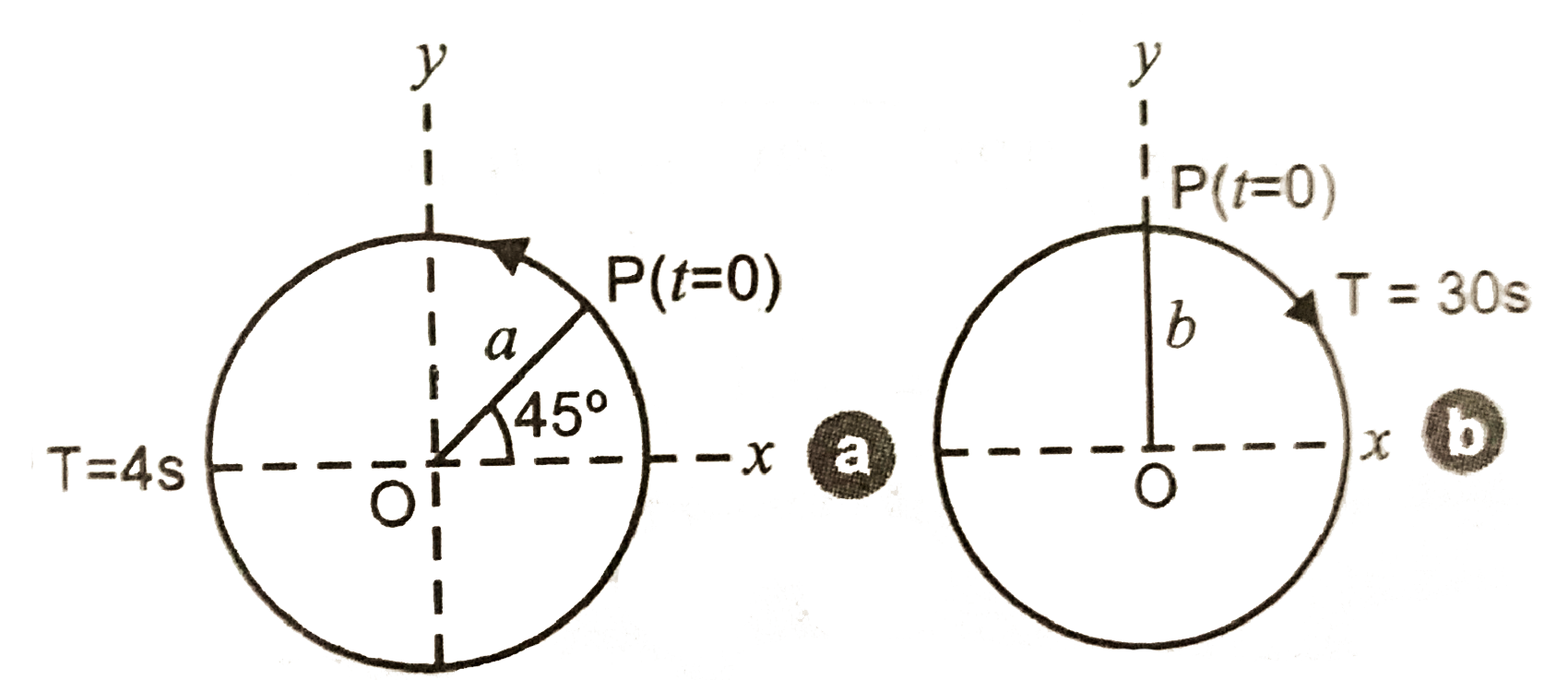 View Solution
View SolutionThe following figure depicts two circular motions. The radius of the circle, the period of revolutin the initial position and the sense of revolution are indicated on the figure. Obtain the simple harmoic motion of the x-projection of the radius vector of the rotating particle P in each case.
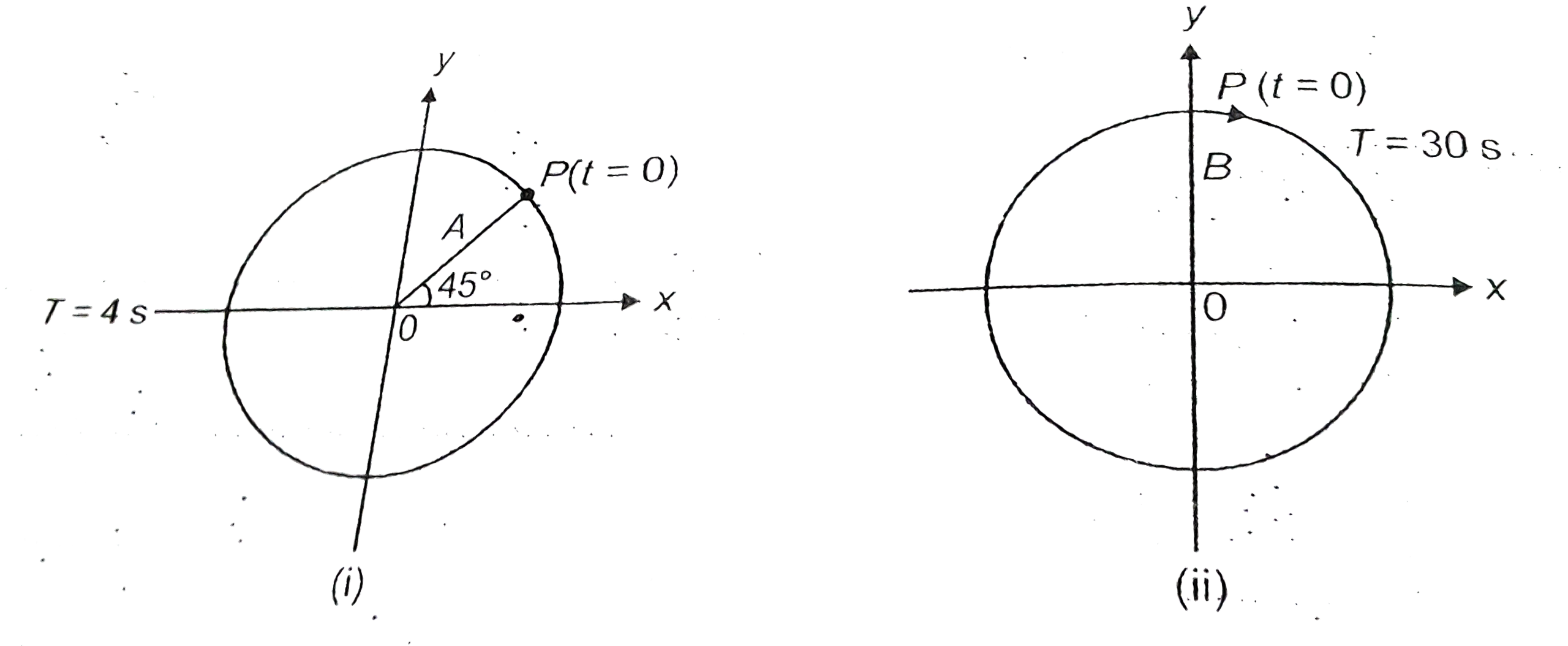 View Solution
View Solution
Knowledge Check
- Question 1 - Select One
The following figure depicts two circular motions. The radius of the circle, the period of revolutin the initial position and the sense of revolution are indicated on the figure. Obtain the simple harmoic motion of the x-projection of the radius vector of the rotating particle P in each case.
 Ax(t)=acos(2πt4+π4)Bx(t)=acos(πt4+π4)Cx(t)=asin(2πt4+π4)Dx(t)=acos(πt3+π2)
Ax(t)=acos(2πt4+π4)Bx(t)=acos(πt4+π4)Cx(t)=asin(2πt4+π4)Dx(t)=acos(πt3+π2)
The following figure depicts two circular motions. The radius of the circle, the period of revolutin the initial position and the sense of revolution are indicated on the figure. Obtain the simple harmoic motion of the x-projection of the radius vector of the rotating particle P in each case.
 View Solution
View Solution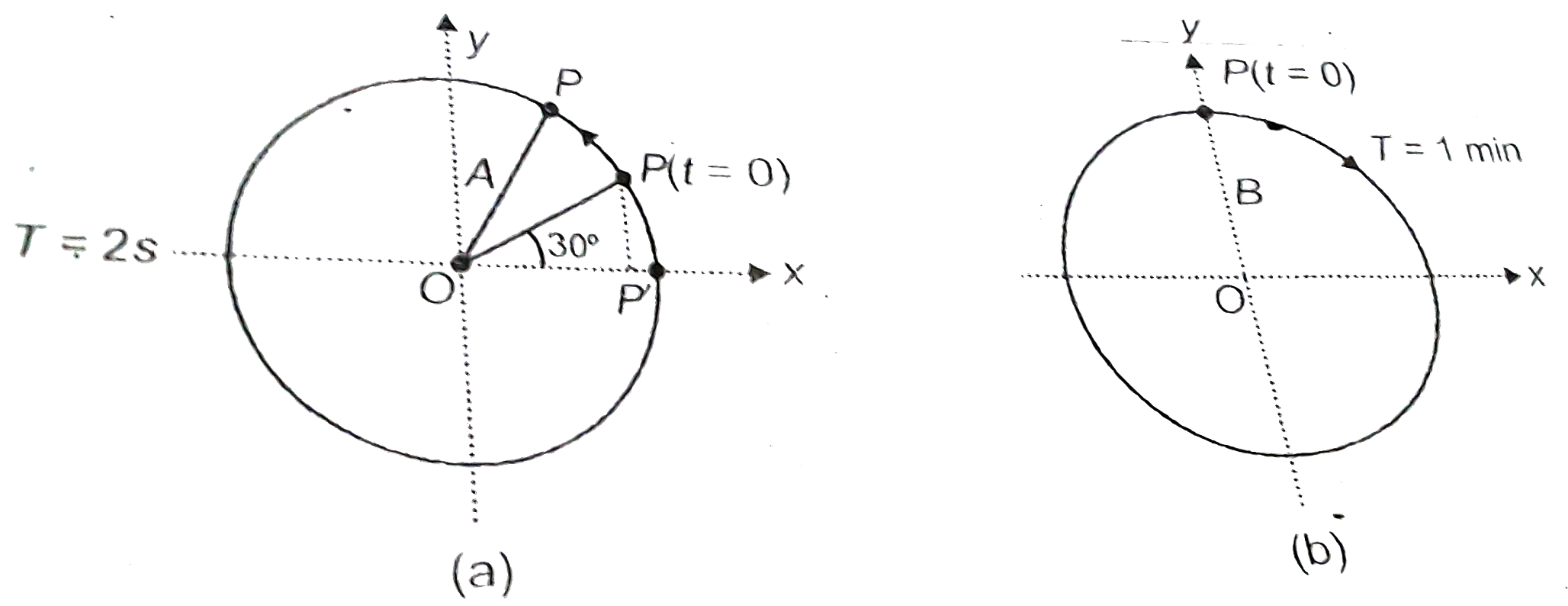
Figure depicts two circular motions. The radius of the circle, the period of revolution, the initial position and the sense of revolution are indicated on the figure. Obtain the SHMs of the x-projection of the radius vector of the rotating particle P in each case.View Solution
Figure depicts two circular motions. The radius of the circle, the period of revolution, the initial position and the sense of revolution are indicated on the figure. Obtain the SHMs of the x-projection of the radius vector of the rotating particle P in each case.View SolutionFrom the figure, obtain the equation of simple harmonic motion of the y-projection of the radius vector of the revolving particle P in each case.
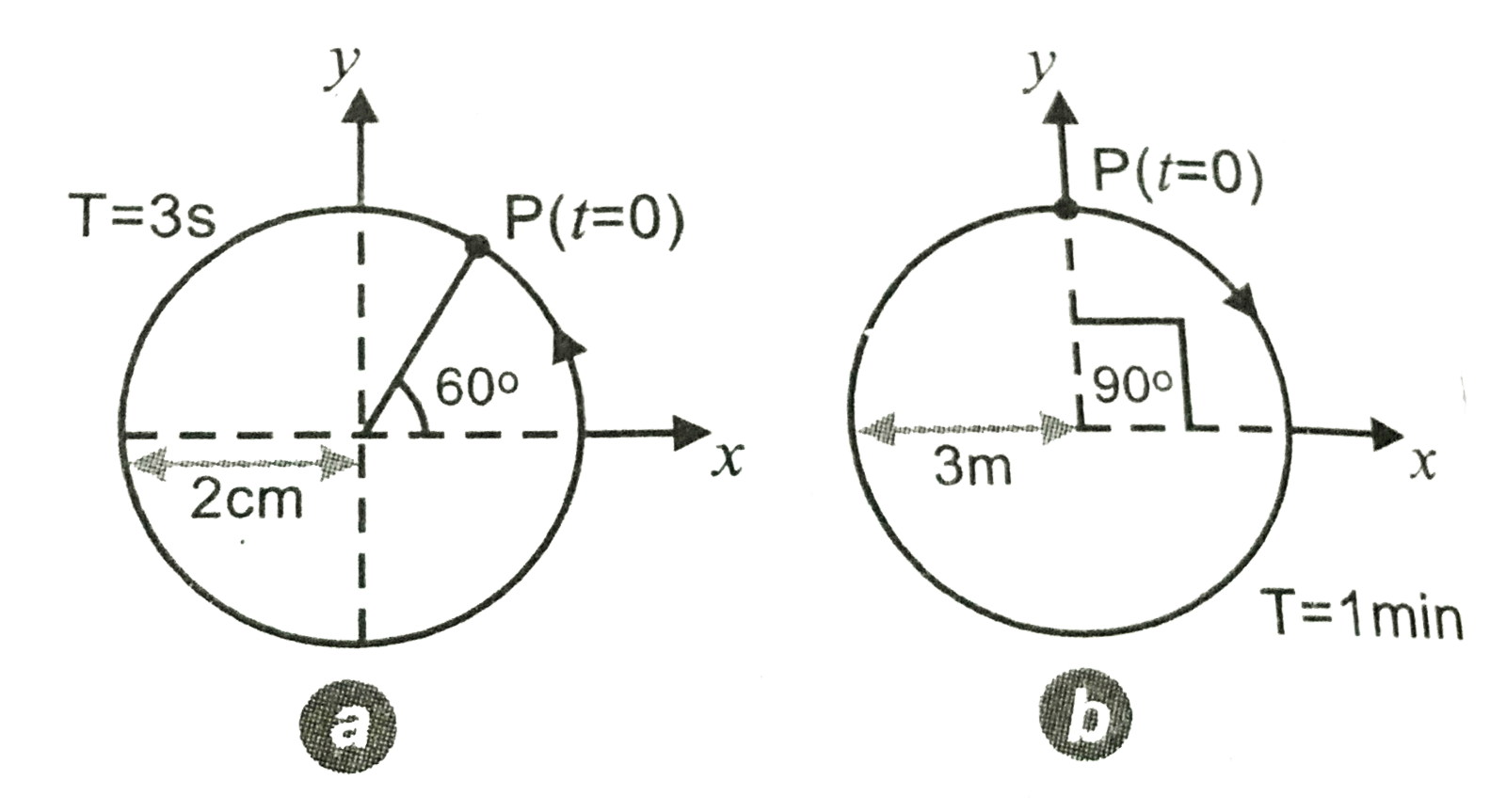 View Solution
View Solution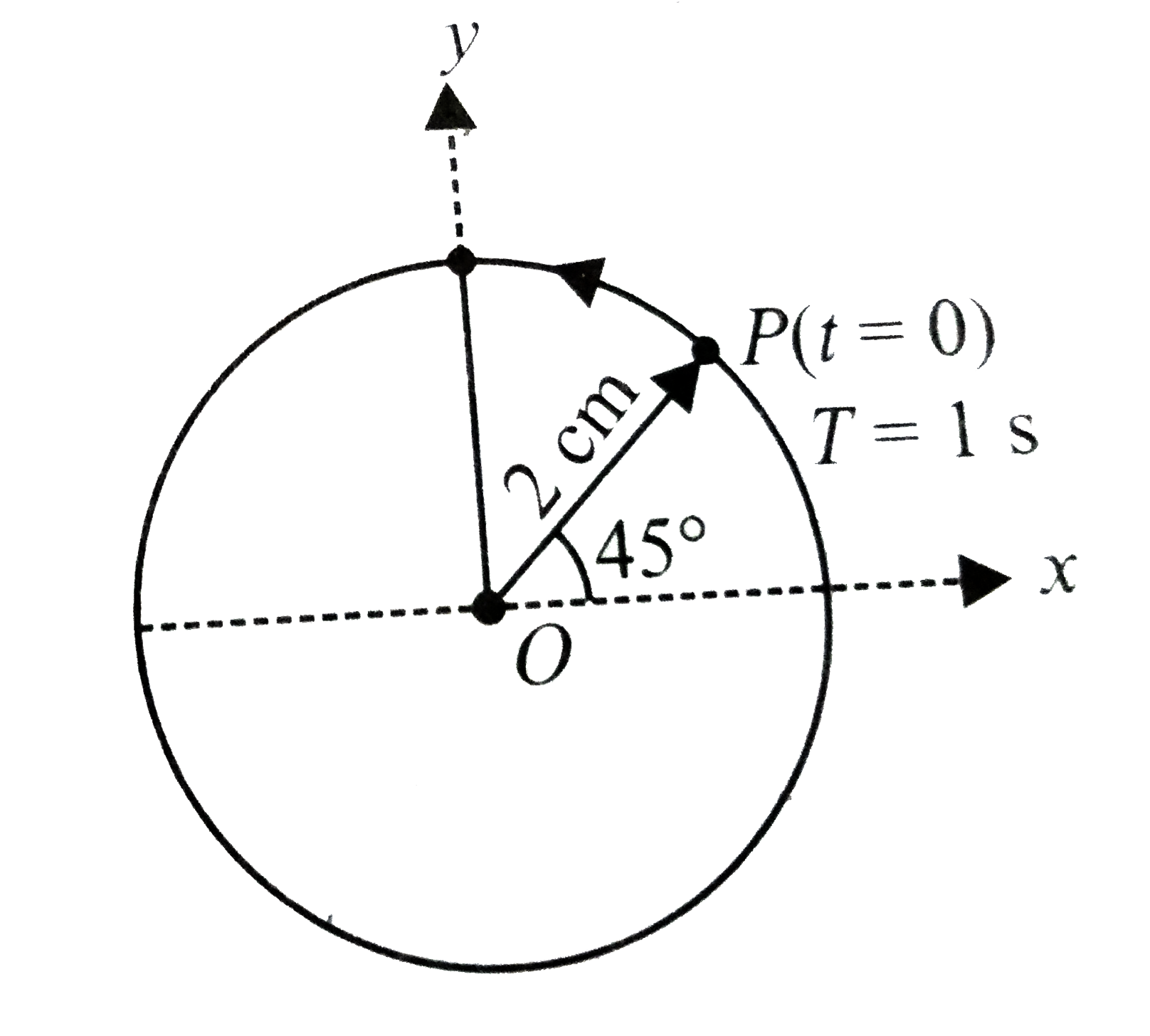
Figure shows the circular motion of a particle. The radius of the circle, the period, sense of revolution and the initial positionn are indicated in the figure. The simple harmonic motion off the x-projection of the radius vector of the rotating particle P isView Solution
Figure shows the circular motion of a particle. The radius of the circle, the period, sense of revolution and the initial positionn are indicated in the figure. The simple harmonic motion off the x-projection of the radius vector of the rotating particle P isView SolutionFigure shows the circular motion of a particle. The radius of the circle, the period, sense of revolution and the initial position are indicated in the · figure. The simple harmonic motion of the X-projection of the radius vector of the rotating particle Pis
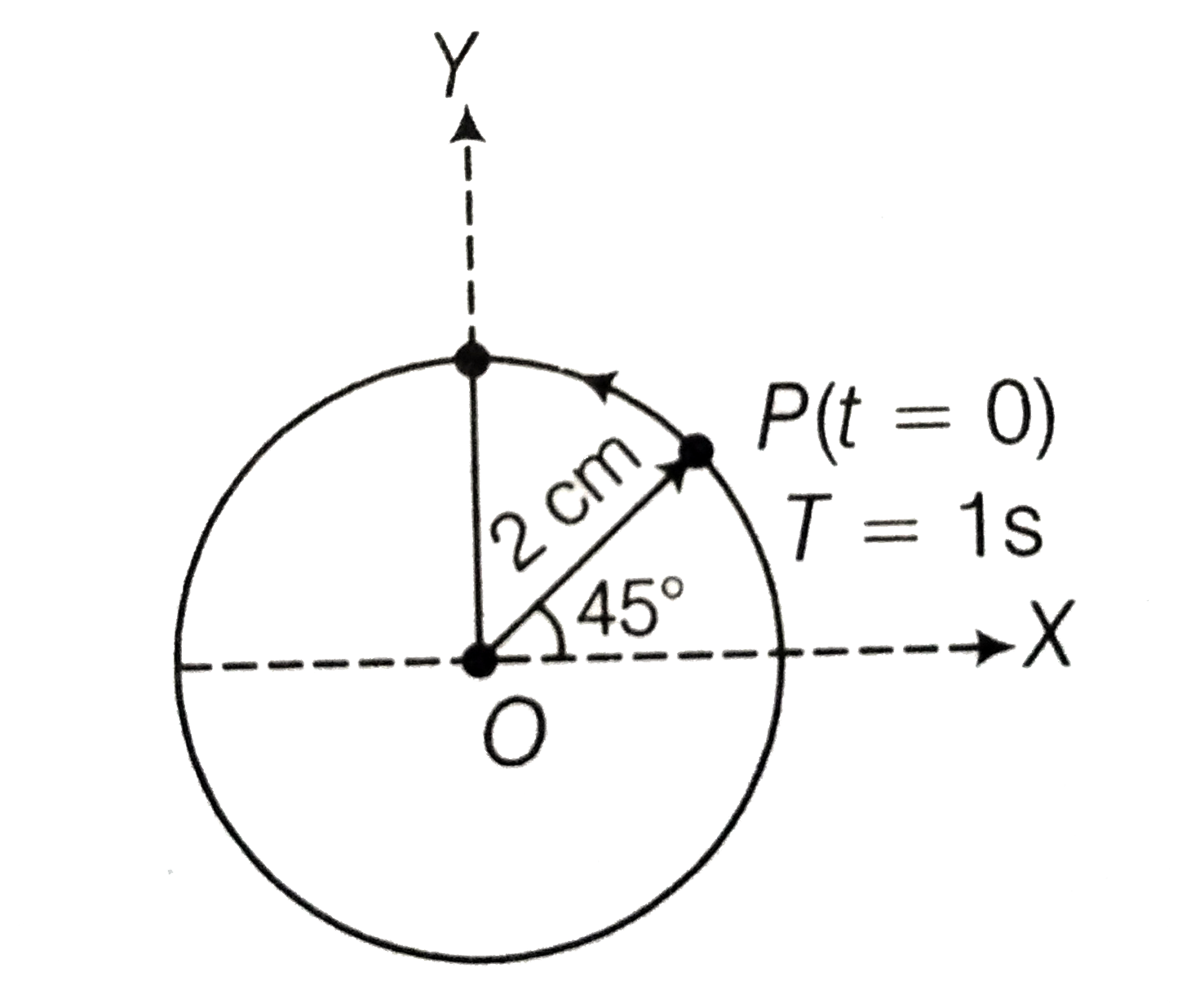 View Solution
View Solution

